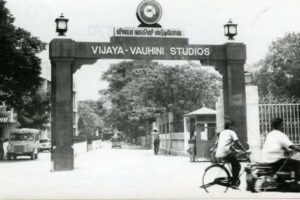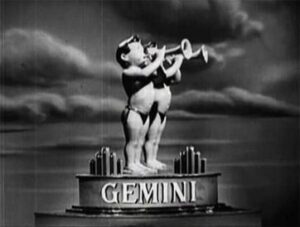Embark on a nostalgic voyage through the heart of Madras, where iconic theatres weave a rich tapestry of memories.

The motion picture industry in the South kickstarted in Madras. (Vettri Theatre/Albert Theatre)
Nostalgia tricks you into believing that you were happier in the past, that your childhood (if you had a good one) was way better than your now (hopefully evolved) adulthood, and your mind does make you believe that the roads back then didn’t have potholes; the vanilla ice cream came in crispy cones, not cornettos; and the best rasam was home-made (still is!).
The present may have an elevated lifestyle but perhaps a lesser emotional appeal. Like the name, Madras sounds way cooler than Chennai, right? No matter what name you call your city, it will always be yours to keep.
My love for Madras comes from the way cinema shaped and still shapes my life. A movie buff from when I was perhaps three years old, I’ve been glued to my city’s film roots for as long as I’ve breathed its air.
Watching movies from all languages and genres was the first “family activity” I was initiated into as a child. Soon, it became a thing to do with my friends as well.
And one fine day, cinema became my calling.
The motion picture industry in the South kickstarted in Madras, where stalwarts of Telugu cinema, such as NT Rama Rao, SV Ranga Rao, and A Nageswara Rao, also made their debuts.
Meanwhile, Telugu producers like Nagi Reddy (Vijaya Vauhini) and LV Prasad (Prasad Labs) set up their studios, along with AV Meiyappan (AVM) and SS Vasan (Gemini Studios), respectively.
From black and white to colour (till the early 90s), the four South Indian film industries ran from the studios in Madras, some of which have now become apartments, malls, and marriage halls. For example, Nexus Vijaya Mall in Vadapalani was hitherto Vijaya Vauhini Studios.
Cut to 2002. Anbe Sivam was one of the last movies to be filmed here and a favourite memory was one of Kamal Haasan regaling us with many good anecdotes from past shooting experiences on the same floor, which was touted at one point to be the largest in India.
The cinema I was exposed to in my joint family household, was a wonderful mélange of languages and cultures.

Nexus Vijaya Mall in Vadapalani was formerly Vijaya Vauhini Studios. (Wikipedia)
I grew up listening to both Tamil and Hindi film music on cassettes, watched Tamil, Malayalam, Kannada, and Telugu films on VHS tapes, and we always went to the movies with an entourage of cousins, uncles, and aunts.
This cinematic confluence taught me to speak languages other than Tamil and comprehend the varied geographical and cultural diversities in the South.
Madras has always been “cosmopolitan” to me in that sense. My first insight into regional politics, native traditions, and local cuisines came from watching movies made by skilled filmmakers from other industries.
My city is also where I discovered my love for Shah Rukh Khan (SRK). The year was 1997 and my friend and I had bought the only available ₹6.50 ticket to the FDFS (First Day First Show) of Dil To Pagal Hai at Melody Theatre in Royapettah (which today houses a mini shopping centre), only to realise that the ticket didn’t even provide us with a chair!
It was a white chalk-marked square space on the floor, from where we had to crane our necks and look at SRK romance Madhuri Dixit. But what an experience that was!
A movie hall is a place where I feel safe, even when seated in the dark amid a sea of strangers. I was told that as a child, a movie hall is where I could be kept quiet — I’ve never cried to be taken away from any movie screening, even when the sound from the screen changed to some bizarre fight scene BGM.
There was this one time when, as a teenager, I got lost walking back home from my school. But, even as a kid, I could tell my dad the route to Devi Paradise on Mount Road. It was a locality registered in my head as “that long street in Madras which had a lot of movie theatres”.
Theatres like Casino and Pilot stuck in my mind as movie halls that were off-limits to me for a long time, as only family members aged 21 and older would attend those Bond movie night shows.
By the time I reached the certified age to see English films, Sathyam Cinemas had opened their high-tech screens in Royapettah.
But to my teenage eyes, it was Devi Paradise that was the primary GOAT (Greatest Of All Time) among theatres in the ’80s and ’90s.
Cut to 2003, I saw rows and rows of girls and boys rise in applause for Suriya at Devi as he simultaneously beat up the bad guys while jumping out of a moving police jeep in Kaakha Kaakha.
And in 2004, I saw crackers being burst inside the same theatre for Vijay as Arjunar Villu from Ghilli blared on.
Today, those who witness their hero’s movies clashing at Kasi Theatre, Chromepet Vettri, or Rohini Cinemas will grasp the excitement of a Diwali clash between Kamal Haasan and Rajinikanth’s movies at Devi, Kamala, or Albert back then.
Around two decades ago, the now-defunct Safire Theatre would screen Malayalam films initially without dubbing or subtitles.
But one could understand the story and appreciate the actors just as well and, by the mid-80s, the films of Mammootty and Mohanlal came in their Tamil versions too.
Telugu films, however, were always released as dubbed versions because Ilaiyaraaja scored music for them and the Tamil audio market was a bonus.
Ram Gopal Varma’s Shiva (1990) was one such roaring hit which I saw with my class of girls! Needless to say, it was a riot of a show. I also watched films ahead of my friend’s thanks to the previews which my uncles would take us to.
I’ve used the privilege of being the youngest in the audience and walking into the film projection room to watch the moving images through the viewing glass, and the operator always warned me not to touch a particular spot on the machine because the emanating heat would burn my hand.

Gemini Studios was founded by SS Vasan. (Wikipedia)
That a tiny moving image can blow up onto a 35mm or 70mm, larger-than-life movie, always felt like magic to me.
As I grew older, I would propel my uncles to take me to shootings, song recordings, and film screenings.
The latter, especially, became a routine where I would ask for the preview four weeks ahead as the film’s release would sort of leak as snippet news in the Tamil dailies.
But I understood early on that previews were held for technicians and actors to see their work and were not a place where one could express excessive reactions (read clap or laugh aloud; okay, just a soft sob was fine).
While Gemini had its screening theatre inside its lab, AVM had their preview theatre called MENA on Cathedral Road, where Saravana Bhavan later came to function.
I saw Nayakan (1987) there first and recall how I stood on the chair to see the name of the director on the title card as my line of vision was cut by the bobbing head of the tall uncle sitting in front.
The subsequent visit to watch the film in Anand Theatre, now an office complex, made me fall in love with movies forever.
I prefer to watch a film inside a theatre because there is a “vibe” to how a larger unknown majority react to what they see on the screen.
When reading or listening to scripts, I have a visual of how a particular scene or dialogue would play in movie halls located in different parts of Tamil Nadu, and with time, these A, B, and C centre lines amalgamated into a more universal segment, which is how cinema should be seen — without anyone or anything limiting its reach or appeal.
As Chennai celebrates its 384th birthday today, I must say that these movie halls continue to define its localities for me. The best way for anyone to convey an address to me is by mentioning the theatre in their area.
I’m quite sure I wouldn’t need a Google map to find my way.
(Sujatha Narayanan is a writer, content producer, artist, and curator of all things creative)
(‘Madras 384’ is a curated collection of articles that joyfully celebrates the captivating journey of Chennai, also known as Madras, while inspiring meaningful discussions.)

Jul 26, 2024

Jul 25, 2024

Jul 25, 2024

Jul 22, 2024

Jul 22, 2024

Jul 22, 2024